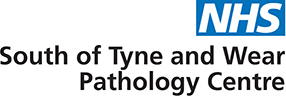Anti-Nuclear Antibody (CTD Screen)
Code:
ANA
Sample Type:
2mL Serum (Gel 5mL Yellow tube)
Frequency of Analysis : Daily
Ref Ranges/Units:
Negative or Positive with titre value and Light intensity units (LIU)
Negative (at 1 in 80 dilution) or <48 Light intensity units (LIU)
Turnaround:
3 days
Special Precautions/Comments:
Method: Indirect immunofluorescence (IIF) microscopy on Hep cell line. Calibration: N/A. EQA scheme: UK NEQAS scheme for Nuclear & related antigens. IQC: Commercial preparation.
Interference: None known.
Interpretation: Results are reported as negative, POS 80, POS 160, POS 320, POS 640 or POS >640, along with the LIU and staining pattern. ANA are not diagnostic in isolation and only indicate the possible presence of disease-specific antibodies: other specific ENA and DNA tests can be cascaded if positive. Only perform if high clinical suspicion of an autoimmune disease. Not useful for screening normal populations as false positive are common in the elderly and unwell, especially at low titres. Test results are an aid to diagnosis and should not be considered as being diagnostic in themselves. Hence the test results should be used in conjunction with the patient’s clinical symptoms, the patient’s clinical history and any other available data, to produce an overall clinical diagnosis.
Additional Information:
Indication: High suspicion of systemic autoimmune disease such as: SLE, Sjogren’s syndrome, Raynauds, PBC, scleroderma, CREST, dermatomysoitis or polymyositis. Insensitive for Jo-1 associated myositis.
Background: ANA are positive in 95-100% of patients with systemic lupus erythematosus (SLE), 40-70% of Sjogren’s patients and 60-80% of scleroderma patients [1]. A postive ANA can also be present in patients with primary biliary cirrhosis (PBC), Raynaud’s, rheumatoid arthritis, dermatomyositis, mixed connective tissue disease and other autoimmune conditions. They are however found in low and high titre in many non-autoimmune conditions and are not diagnostic. Homogenous patterns are associated with SLE and mixed connective tissue disease. Speckled patterns are also associated with SLE, Sjogren’s, scleroderma, polymyositis, rheumatoid arthritis and mixed connective tissue patterns. Anti-centromere antibody is a marker for the CREST variant of scleroderma. Positive centromere antibodies are also found in primary biliary cirrhosis, of which half may have features of scleroderma (progressive systematic sclerosis) and in other conditions such as primary Raynaud’s. Anti-nucleolar antibodies are seen primarily in patients with scleroderma where they are found in high titres and often with overlap features of myositis. This ANA specificity is less frequently encountered in systemic lupus erythematosus (SLE), chronic polyarthritis, primary Sjogren’s syndrome and Raynaud’s phenomenon, where they may be present, generally at low titres. Nucleolar antibodies are not uncommon in patients with non-autoimmune liver disease and other conditions. Anti-Ro antibody is found in Sjogren’s syndrome and SLE High titres in pregnancy may be implicated in congenital heart block. Various other antibodies can also be detected including anti-mitochondrial antibodies (AMA). AMA occurs in PBC and Sjogren’s syndrome. Different types of AMA are described, based on antigen specificity, designated on a numerical basis: M1 to M9. The AMA associated with PBC is usually M2a or M2b.
References: Khan S, et al. The clinical significance of antinucleolar antibodies. J Clin Pathol. 2008. 61:283-286. Koenig M, Diede M, Senecal JL. Predictive value of antinuclear autoantibodies: the lessons of the systemic sclerosis autoantibodies. Autoimmunity Reviews. 2008. 7: 588-593. Muro Y. Antinuclear antibodies. Autoimmunity. 2005. 38(1): 3-9. Kavanagh A, et al. Guidelines for clinical use of antinuclear antibody test and tests for specific autoantibodies to nuclear antigens. American College of Pathologists. Arch Pathol Lab Med. 2000. 124(1):71-81. [Ref 1] Peene I, et al. Detection and identification of antinuclear antibodies (ANA) in a large and consecutive cohort of serum samples referred for ANA testing. Ann Rheum Dis. 2001. 60(12):1131-1136.
See Also: ENA; dsDNA
Telephone Gateshead Lab: 0191.4456499 Option 4, Option 1


